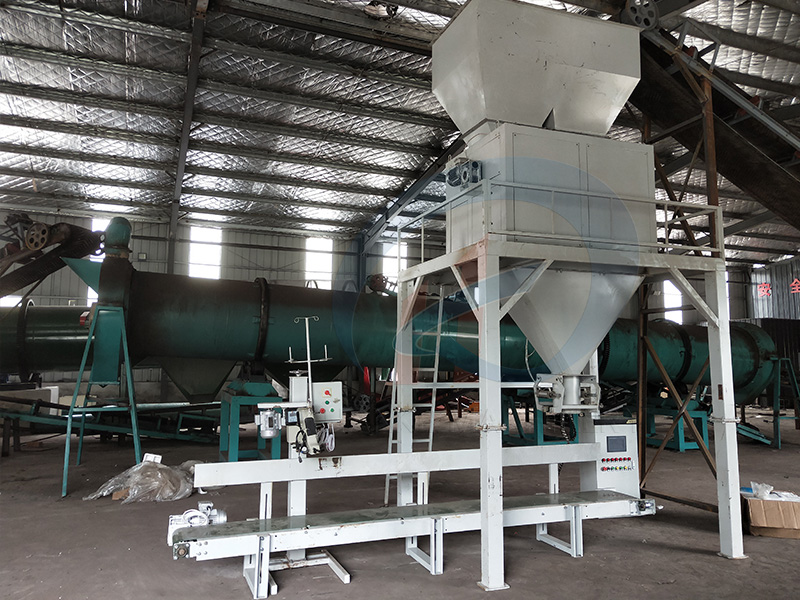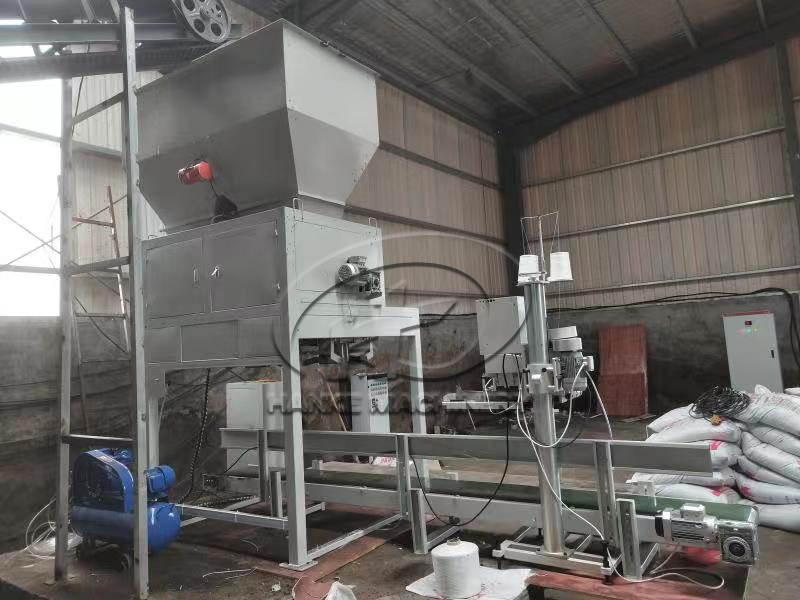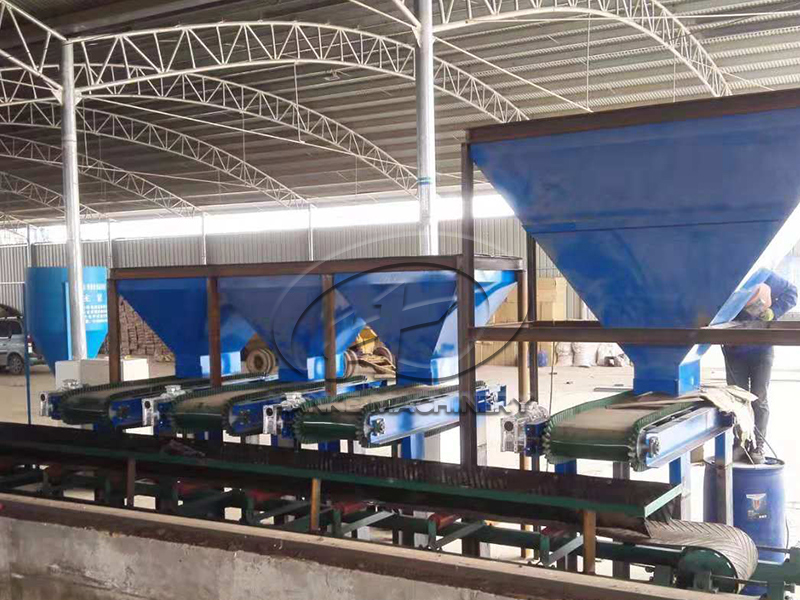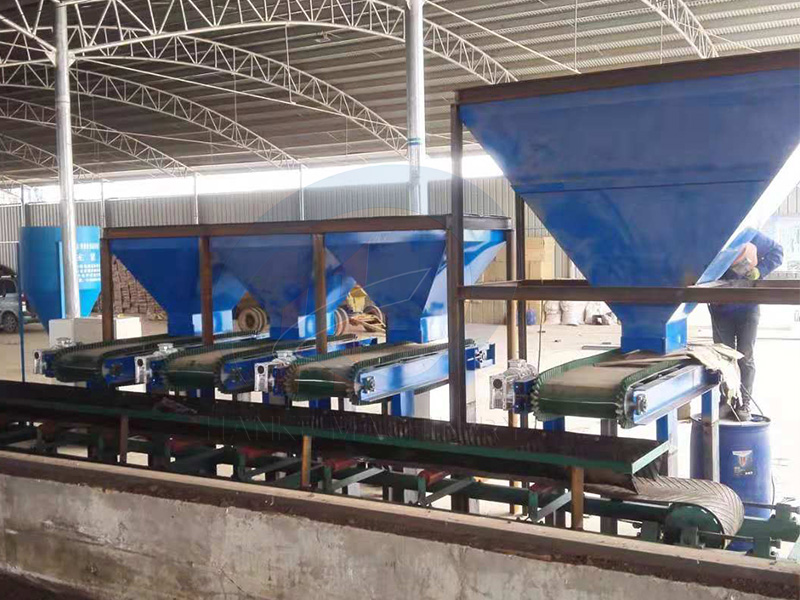 HOME > News > Industry News > How to select a 15-ton-per-hour automatic compound fertilizer batching and packaging production line
HOME > News > Industry News > How to select a 15-ton-per-hour automatic compound fertilizer batching and packaging production line Update time : 2025-08-27 Publisher:Zhengzhou Hanke Machinery
When choosing a compound fertilizer automatic batching and packaging line with a production capacity of 15 tons per hour, for instance, if it is a formula of 7 raw materials, it needs to be equipped with a 7-bin dynamic batching machine and a granule packaging machine. The core is "follow the production volume and pay attention to details to avoid pitfalls". There is no need to use complex terms. Just follow the steps introduced by Zhengzhou Hanke Machinery below to ensure its implementation:
The first step: Clearly list the "demand bottom line"

Before selecting a model, it is essential to clarify three key pieces of information, which form the basis for all equipment matching:
What do your compound fertilizer granules look like?
Particle size: Is it small particles of 1-3mm or medium particles of 3-5mm? Particles that are too large will clog the discharge port of the batching machine, while those that are too small are prone to material leakage.
Humidity: Are the raw materials damp? Will it clump together? For damp materials, choose a batching machine with "anti-clogging discharge" function; otherwise, it won't discharge materials for half a day and the output will never reach 15 tons.
2. What are the packaging specifications?
The most common ones are 25kg/ bag or 50kg/ bag, which directly determines the speed of the packaging machine
25kg per bag: 15 tons per hour = 600 bags need to be packed per hour (15,000kg ÷25kg)
50kg per bag: 15 tons per hour = 300 bags need to be packed per hour (15,000kg ÷50kg)
When choosing a packaging machine, the speed must be "10% more than this number" (for example, if you want 600 bags per hour, choose 650 bags per hour) to prevent the fluctuation of raw materials from not keeping up.
Step 2: Core equipment selection (7-bin dynamic batching machine + granule packaging machine, focus on these points)
These two are the "hearts" of the production line. Choosing the right one ensures stable output, while choosing the wrong one requires daily repairs.
1. 7-bin dynamic batching machine: Focus on "stable feeding and accurate weighing"
The dynamic batching machine mixes seven kinds of raw materials in proportion. If the mixture is not accurate, the nutrient content of the fertilizer will be substandard and it won't even be sold. Zhengzhou Hanke Machinery suggests that you consider three points when making a selection:
Don't choose the size (capacity) of the warehouse randomly
The amount of raw materials to be stored in each warehouse is calculated based on the "one-hour usage". For instance, if a certain raw material is used at a rate of 2 tons per hour and its specific gravity is 1.2 tons per cubic meter (approximately the specific gravity of urea), then a single warehouse capacity of 2 cubic meters is sufficient (2 tons ÷1.2≈1.67, leaving a margin of 2). Seven warehouses placed side by side would occupy a length of approximately 8 to 10 meters (each warehouse has a diameter of 1 to 1.2 meters). Measure the width of the workshop in advance to ensure that there is no space left after purchase.
The weighing accuracy should be within ±0.5%
For instance, when preparing 100kg of fertilizer, the error should not exceed 0.5kg. Otherwise, if the nutrient content of the fertilizer exceeds the standard or is insufficient, it will be troublesome to be inspected. When making a selection, ask the manufacturer to show you the brand of the "load cell" (such as Mettler-Toledo, do not use no-name brands, as it is easy to be inaccurate).
It must be equipped with an "anti-clogging discharge" design
Compound fertilizer raw materials (especially potassium fertilizers) are prone to absorbing moisture and forming lumps. The discharge port must be equipped with a "vibrator" or "stirring scraper"; otherwise, lumps will clog the port, preventing the material from being discharged and causing the production line to stop (I have seen many factories that, due to not choosing anti-clogging measures, clear the material only once every half a day, and the output simply cannot reach 15 tons).
2. Granule packaging machine: Focus on "sufficient speed and firm sealing"
If the packaging machine is slow, the materials prepared by the front batching machine will pile up like a mountain. The seal was not tight, causing material leakage during transportation, and all the customers complained. When making a choice, consider two points:
The speed must match the output
According to the previous calculation: 25kg per bag requires 600 bags per hour, and 50kg requires 300 bags per hour. When choosing a "fully automatic woven bag packaging machine" (woven bags are basically used for compound fertilizers), pay attention to the "actual speed" marked by the manufacturer (do not believe the "theoretical speed", for example, the theoretical speed is 700 bags per hour, but the actual speed may only be 600). It is best to have "automatic bag loading and automatic sealing" (manual bag loading is too slow and cannot keep up).
The sealing method must be correct
For granular materials, do not use pure heat sealing (it is easy to burn the bag). Choose the "heat sealing + sewing bag" combination: First, heat seal to stick the bag opening, then sew a circle with thread. Double insurance, and there will definitely be no material leakage. In addition, the feeding port should be equipped with a "buffer device" (such as a flexible connection), otherwise the particles will be washed too fast, there will be air in the bag, and the bag will bulge when sealed.
Step 3: Don't overlook the "supporting equipment" (without these, the production line won't be able to operate).
Just having a batching machine and a packaging machine is not enough; there must be equipment in between to connect them; otherwise, the materials cannot be transported there. Three must-have:
Belt conveyor (connecting the batching machine and the packaging machine)
Transport the mixed materials from the batching machine to the packaging machine. The speed should match that of the batching machine and the packaging machine (for example, if the batching machine can produce 15 tons per hour, the conveyor should be able to transport 15-18 tons per hour). Choose "stainless steel material" (do not use carbon steel, as it is prone to rust and contaminate the fertilizer). The belt width should be 500-600mm (too wide will take up space).
2. Bucket elevator (feeding the batching machine)
There are 7 mixing silos, and 7 small hoists (each corresponding to one silo) are needed to transport the raw materials from the ground to the top of the silos. Select "stainless steel hoppers", and the speed should be based on the "one-hour usage of the silo" (for example, if the silo uses 2 tons per hour, choose a elevator with a capacity of 2.5 tons per hour). Do not choose one that is too low. The height of the silo top is generally 4 to 5 meters, and the height of the elevator must be sufficient.
Step 4: A Guide to Avoiding Pitfalls
1. Don't just look at the price; pay attention to the "after-sales service" : When choosing a manufacturer, ask clearly about the after-sales response time, whether there are spare parts for wear and tear, and whether they can be delivered quickly.
2. Be sure to "test the machine" : Take your own compound fertilizer granules to the manufacturer for a test run. Only purchase if there are no issues after the test.
3. Calculate the "site" accurately: Prepare the "length, width and height" of the workshop in advance: the 7-bin batching machine + conveyor + packaging machine should be approximately 15 meters long, 8 meters wide and 5 meters high (the height of the bin top + the elevator). Don't buy equipment that can't be placed and then have to modify the workshop, wasting money in vain.
Final summary: Selection steps for a 15-ton-per-hour automatic compound fertilizer batching and packaging production line
1. Clarify your own: particle size/moisture content, packaging specifications (25kg/50kg), raw material types (confirm whether warehouse 7 is needed);
2. Select a 7-bin dynamic batching machine: Calculate the bin capacity based on the 1-hour usage, with an accuracy of ±0.5% and anti-clogging discharging.
3. Select a granule packaging machine: Calculate the speed based on output (600 bags per hour for 25kg), and choose heat sealing + sewing bags.
4. Equipped with conveyors, elevators and dust collectors;
5. Test the machine, confirm after-sales service, and verify the site.
Based on this, the selected 15-ton-per-hour automatic compound fertilizer batching and packaging production line is sure to achieve a production capacity of 15 tons per hour and is less likely to have problems.

see details +

see details +

see details +

see details +

 Tel:+86 17319777703
Tel:+86 17319777703
 E-mail:hkautomaticpack@foxmail.com
E-mail:hkautomaticpack@foxmail.com
 Address:Xingyang City, Zhengzhou City, Henan Province.
Address:Xingyang City, Zhengzhou City, Henan Province.
Privacy Policy Copyright © Zhengzhou Hanke Machinery Equipment Co., Ltd Co., Ltd.